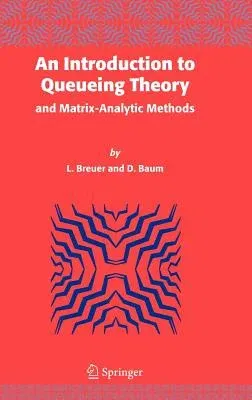L Breuer
(Author)An Introduction to Queueing Theory: And Matrix-Analytic Methods (2005)Hardcover - 2005, 7 November 2005

Qty
1
Turbo
Ships in 2 - 3 days
In Stock
Free Delivery
Cash on Delivery
15 Days
Free Returns
Secure Checkout

Print Length
272 pages
Language
English
Publisher
Springer
Date Published
7 Nov 2005
ISBN-10
1402036302
ISBN-13
9781402036309
Description
Product Details
Authors:
Book Edition:
2005
Book Format:
Hardcover
Country of Origin:
NL
Date Published:
7 November 2005
Dimensions:
24.79 x
16.56 x
1.93 cm
ISBN-10:
1402036302
ISBN-13:
9781402036309
Language:
English
Location:
Dordrecht
Pages:
272
Publisher:
Weight:
576.06 gm